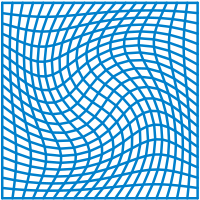Diffeomorphism

Okay kiddo, let's talk about diffeomorphism.
Imagine you have a toy car and you want to transform it into a different shape, like a toy truck. Can you do that? Sure! You can bend the wheels, twist the body, and voila! You have a new toy.
Now imagine you have a ball, but you want it to still look like a ball, just in a different place. So you pick it up and move it to the other side of the room. It's still a ball, right?
These are both examples of transformations, or changes, to objects. In math, we call these kinds of transformations "maps".
Diffeomorphism is a special kind of map that is really useful in a branch of math called topology.
It's like this: imagine you have a squishy, rubbery object like a toy balloon. You can stretch and twist it all you want, but it's still the same object, right? That's kind of like a diffeomorphism.
A diffeomorphism is a map that changes the shape and position of an object, but doesn't change anything important about the object, like how it's connected or the distances between points on the object.
So if you have a squishy ball, you can use a diffeomorphism to "squish" it into a different shape, like a squishy cube, that still has the same important features as the original ball. Or you can use a diffeomorphism to move the ball to a different place, without changing anything else about it.
This might sound like a really specific and complicated thing, but it's actually incredibly useful in many areas of math and science, from physics to computer graphics to biology.
Does that help, little one?
Imagine you have a toy car and you want to transform it into a different shape, like a toy truck. Can you do that? Sure! You can bend the wheels, twist the body, and voila! You have a new toy.
Now imagine you have a ball, but you want it to still look like a ball, just in a different place. So you pick it up and move it to the other side of the room. It's still a ball, right?
These are both examples of transformations, or changes, to objects. In math, we call these kinds of transformations "maps".
Diffeomorphism is a special kind of map that is really useful in a branch of math called topology.
It's like this: imagine you have a squishy, rubbery object like a toy balloon. You can stretch and twist it all you want, but it's still the same object, right? That's kind of like a diffeomorphism.
A diffeomorphism is a map that changes the shape and position of an object, but doesn't change anything important about the object, like how it's connected or the distances between points on the object.
So if you have a squishy ball, you can use a diffeomorphism to "squish" it into a different shape, like a squishy cube, that still has the same important features as the original ball. Or you can use a diffeomorphism to move the ball to a different place, without changing anything else about it.
This might sound like a really specific and complicated thing, but it's actually incredibly useful in many areas of math and science, from physics to computer graphics to biology.
Does that help, little one?
Related topics others have asked about:
